Bad Boys, Bad Boys: The Persistent Presence of the Byronic Hero
An enigmatic anti-hero who acts without a clear meaning. The tragic soul who fights for neither good nor evil. The leather-clad bad boy who plays by his own rules. The Byronic hero has become a timeless figure in literature, film and other forms of pop culture phenomena. What is it about these characters that keeps them ever present in the modern zeitgeist and keeps us so passionately drawn to them?
The Byronic hero got his start in the works of Lord Byron, most famously in “Manfred,” dating back to the 1800s. Manfred, the first anti-hero, was brooding, defiant, and fought for no cause other than his own. He was constantly tormented by a tragic and mysterious past that fueled his revolt against society and its norms.
Many of Byron’s works were notably thought to be somewhat autobiographical and many of his heroes were said to be partly modeled after the author himself, adopting many of his qualities, which is what earned them moniker “Byronic” heroes. This mysterious protagonist/villain has since popped up in numerous forms, including the Twilight saga’s Edward Cullen, the Fifty Shades of Grey trilogy’s Christian Grey, and even the Harry Potter series’ Severus Snape.
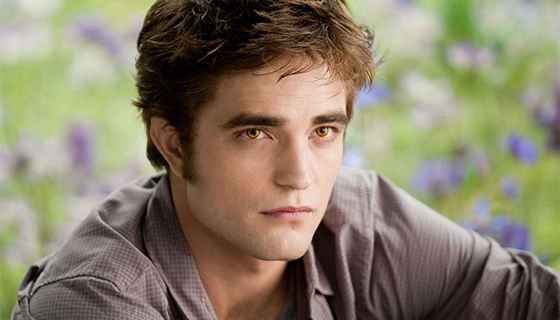
So, how do you know when you have a Byronic hero on your hands? What makes them different from all other heroes/superheroes? Your everyday hero, let’s say Superman for example, are pretty cut and dry and easy to pinpoint. They act in a straightforward manner and clearly on the side of good. Superman fights for justice; he takes the bad guys down to protect the city of Metropolis and everyone that he holds dear. Byronic heroes also fight against injustice, but usually those done to them. They follow no strict code of ethics and often appear quite selfish. They are sometimes, as dear old Snape was, suspected to be the villain at first glance. Sometimes, they’re battle may be more internal, making it even harder to determine where these characters loyalties lie. Christian Grey was in a constant struggle against the demons of his past that threatened to destroy his future. It’s something about this seemingly villainous, potentially selfish, and nearly understandable an unpredictable nature that continues leave the ladies breathless.
It’s no surprise why this character type remains in the spotlight. Grey is dark and brooding with a hint of romance thrown into the mix, making him unbearably seductive, while Cullen’s air of danger and mystery strikes many as alluring. Even Snape possesses a je ne sais quoi that gets the fangirls, well, fangirling. But while these, and several other Byronic heroes, often prove to be good guys, they still reel the female readers in with their dastardly ways. This can easily give the impression that a little danger makes a man more interesting and that they shouldn’t think twice about becoming romantically involved with someone of such an intense nature. But, especially in the era of #metoo, it is important to know where to draw the line. Women must be able to determine where the allure ends and the real danger begins.
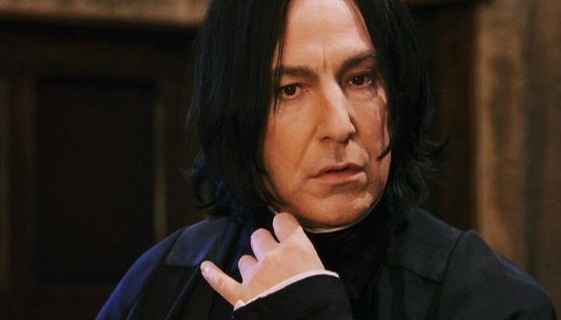
Many believe that from the time this character was created and beyond, he has been cemented in the public eye as the ideal version of a man, one who sacrifices warmth and emotion for strength and dominance; aloof, yet strong and protective. These common depictions have conditioned readers/viewers to see the Byronic hero as the perfect, desirable man. Their mystery and unpredictability always keeps us on our toes, repeatedly drawing us back in to see what they will do next. We are simply hooked on their overwhelming masculinity.
But today fans are beginning to realize that, like a Transformer, there is more to the Byronic hero than meets the eye. The deeper cause of our undeniable attraction lies far beneath the hero’s flawlessly attractive surface. These one dimensional characters are much deeper than they appear. Many of the Byronic heroes of the past and today possess one defining characteristic that captures the attention: a relatable humanity.

Jane Eyre’s Mr. Rochester comes across as cynical and arrogant while at the same time sophisticated and intelligent. After Jane, our heroine, thaws his icy heart, his cruel facade melts away and we are introduced to kind and passionate gentleman haunted by his past mistakes. In true Byronic hero fashion, Rochester has some skeletons in his closet, or in this case, a Bertha in his attic. Sorry Jane, but Mr. Rochester already has a Mrs., a veritable loony that he keeps hidden away in the depths of his tremendous mansion. Rochester imprisons one woman and lies to another all for the sake of love and protection. He spares Bertha the misery of an asylum by keeping her confined in her own home and spares Jane emotional turmoil by hiding the truth ( well, for awhile at least).
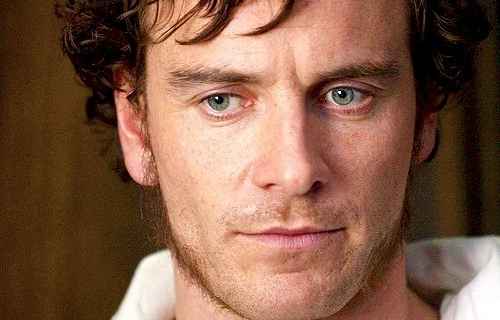
The musical specter from Gaston Leroux’s The Phantom of the Opera is a marvelous example of one who deviates from the expected norm of the Byronic hero. Mystery: check. Charisma: check. Striking good looks: yeah, not so much. Come on, we all know what’s under that mask. Unlike Christian Grey, who’s sexy and he knows it, the Phantom possesses a great amount of insecurity. His facial deformity causes him to turn away from the “garish light of day” and indirectly pursue the songstress who has captured his heart from the safety of the shadows.
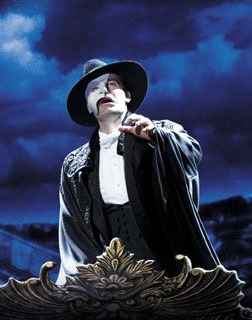
If it is too soon to bring him into this after Infinity War, then I apologize, but we must consider Loki. Geekdom’s favorite bad boy is cocky, brash, and only has the best interests of numero uno at heart. But his many acts of villainy stem from a lack of identity. Being an adopted son, Loki endeavors to understand his true self and seeks to inherit power and a kingdom in his own right. But as his role in the Marvel Cinematic Universe grows more prevalent, we begin to see that more of his bad choices are made for the sake of those that he holds dear, the most recent example being his sacrifice of the space stone to Thanos in order to save his brother, Thor.
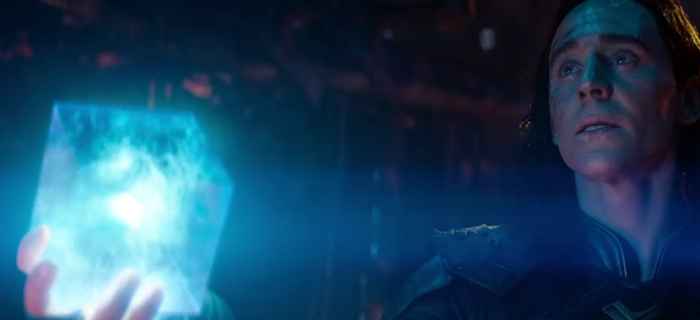
Finally, we have a Byronic hero who is commonly overlooked, The Outsiders’ Dallas “Dally” Winston. Dally is depicted as the baddest of the bad, the toughest Greaser to ever start a rumble. He’s selfish, he’s dark, he’s rude, crude, and an all around nasty dude. Though he’s loyal to his gang of misfits, he seems to only care about helping himself. More than that, he’s seems to just not care at all. It takes the death of one of their own for readers to see who Dally truly is. After Johnny’s death, Dallas does the last thing that his fellow Greasers ever expected him to do: he gets himself killed on purpose. As Ponyboy observed, “I knew he would be dead, because Dally Winston wanted to be dead and he always got what he wanted.” Dally portrayed himself as the roughest, most uncaring individual to hide the fact that he cares a little too much.

So what do a wealthy Englishman, a musical burn victim, a Norse god, and a hoodlum have in common? They are are all incredibly flawed individuals. Many readers and movie goers are indeed attracted to the Byronic hero’s physical perfection, but also harbor a deep connection to their emotional imperfection. These are not perfect superheroes or powerful gods (other than Loki) who possess inhuman strength and abilities, these are tragically flawed human beings. And it is that relatable sense of humanity that audiences can understand. It is not the Byronic hero’s heroism that continues to pull us in, it is their deeply rooted humanity. We know and understand their fear, their insecurities, their love.
What do you think? Leave a comment.











Rochester from Jane Eyre is my favorite byronic hero. Who is yours?
Heathcliff from Wuthering Heights.
Great choice! In many ways, I would call him even more Byronic than Byron. He is so damaged by his early years and the abuse by Hindley that he really has no “good side”, even in his love of Cathy. Granted, her rejection contributed to his rage at the world, but he was headed that way already. He is the ultimate, self-destructive anti-hero.
Hemingway’s Jake Barnes (The Sun Also Rises)
Rowling’s Severus Snape (Harry Potter)
We are often fooled by their sensuality and wounded souls. 😉
Claude Frollo from Notre Dame de Paris by Victor Hugo is an interesting one. Unlike Disney’s, Hugo’s original 1831 novel depicts his characters in a much darker light.
This. He is not a sinister man, but his inability to reconcile his very human desires destroys him and almost every other character linked to him.
Iggy Pop!
Im obsessed with Byronic heroes. They are so much more interesting than the usual, leading man type characters. I love that you put Severus Snape in there! His love for Lily was heart-wrenching.
I would add Linus Larrabee from Sabrina (1995) to this list. He was cold, mean, intensely focused on money, and willing to do anything to get Sabrina out of the picture. Until he falls in love with her.
He’s an interesting choice! Both actors who played Linus were cut out to do that. Harrison Ford, especially, is the handsome, often self-serving man of action, who ultimately saves people. The character of Han Solo was very Byronic! After all of his “Me first” talk, who shows up to help Luke destroy the Death Star?
I am definitely going to have to revisit Sabrina again.
Oh I love Severus Snape.
His life is an unending tragedy from start to finish.
Edward from Jane Eyre is perhaps one of my favorite characters in general.
Great post. Modern pop culture is peppered with Byronic Heroes dressed up as doctors, lawyers, and other detectives.
It seems we just can’t get enough of this flawed hero, even if loving him is just a little bit dangerous.
The subject matter is really great. I was delighted to see that you didn’t forget about Dally from Outsiders. He was my first thought as soon as I began reading your article. As tough as he pretended to be, he fiercely protected the younger, more innocent Ponyboy and Johnny. His love was genuine and evident in the selfless way he provided for them. The most telling example is Cherry’s proclamation that she hoped never to see Dally again because she’d probably fall in love with him. In fact, all of your examples were spot on (although you did forget Deadpool). Being an avid reader and lover of language, I am a little embarrassed to admit that I was not familiar with the term “Byronic hero.” I almost didn’t read the article because I misread it as “Bionic hero.” Thank you for teaching me that there is an actual term for the tragic hero.
The only suggestions I have are technical or grammatical ones. They are outlined below. I hope it helps! Keep up the great work.
Paragraph 2:
“The Byronic hero got his start in the works of Lord Byron, most famously in “Manfred,” dating back to the 1800s.”
Suggestion: “…In his works, Lord Byron introduced this tragic hero, who has captivated audiences since the 1800s. Most famously, his first anti-hero and the title character in Manfred, was brooding, defiant, and fought for no cause other than his own.
Paragraph 3:
Many of Byron’s works were notably thought to be somewhat autobiographical and many of his heroes were said to be partly modeled after the author himself, adopting many of his qualities, which is what earned them moniker “Byronic” heroes.
Suggestion: Many of Byron’s works were perceived as almost autobiographical with a number of the characters’ qualities resembling the author himself. Consequently, the origin of the moniker, “Byronic,” stems directly from the parallels that existed between the creator and the created.
Paragraph 4:
“So, how do you know when you have a Byronic hero on your hands? What makes them different from all other heroes/superheroes?”
Suggestion: Avoid switching points-of-view. So, how does an audience recognize a Byronic hero? What differentiates this protagonist from every other hero/superhero?
“Your everyday hero, let’s say Superman for example, are pretty cut and dry and easy to pinpoint. They act in a straightforward manner and clearly on the side of good.”
Suggestion: An everyday hero, Superman for example, is easily recognizable by his classic clean-cut image and perfect sense of right and wrong.
(avoid switching forms from singular to plural when speaking about a subject)
Suggestion: He acts in a straightforward manner, clearly representing the better side in a battle of Good vs. Evil.
“Sometimes, they’re battle may be more internal, making it even harder to determine where these characters loyalties lie.
Correction: Sometimes, their battles may be more internal, making it even harder to determine where these characters’ loyalties lie.
“It’s something about this seemingly villainous, potentially selfish, and nearly understandable an unpredictable nature that continues leave the ladies breathless.”
Correction: It’s something about this seemingly villainous, potentially selfish, and nearly understandable and unpredictable nature that continues to leave ladies breathless.
Paragraph 5:
“It’s no surprise why this character type remains in the spotlight.”
Correction: It’s no surprise that this character type remains in the spotlight.
“Grey is dark and brooding with a hint of romance thrown into the mix…”
Suggestion: Grey is dark and brooding, a hint of romance underlying his cold exterior…”
“Even Snape possesses a je ne sais quoi…”
(Avoid cliched phrasing)
Suggestion: Even Snape possesses an unexplainable quality…
“But while these, and several other Byronic heroes, often prove to be good guys, they still reel the female readers in with their dastardly ways. This can easily give the impression that a little danger makes a man more interesting and that they shouldn’t think twice about becoming romantically involved with someone of such an intense nature. But, especially in the era of #metoo, it is important to know where to draw the line. Women must be able to determine where the allure ends and the real danger begins.”
Suggestion: But while these, and several other Byronic heroes, often prove to be good guys, they still reel in the female readers despite their dastardly ways. This can easily give the impression that a little danger makes a man more interesting and that intense nature practically irresistible. But, especially in the era of #metoo, it is important to know where to draw the line. Women must be able to determine where the allure ends and the real danger begins.
(The #metoo reference and the declaration that women are in danger feels a little out of place in this article, IMO.)
Rest of the body:
(watch the switching of points-of-view/verb tenses/plurality in the subsequent paragraphs)
Closing Paragraph:
“And it is that relatable sense of humanity that audiences can understand. It is not the Byronic hero’s heroism that continues to pull us in, it is their deeply rooted humanity.”
Suggestion: This sequence seems a little redundant. Consider rephrasing or cutting one of the sentences.
Hi JeniKing,
This is really great editing advice and it would be great to see this occur in the editing stages of the article process. Make sure you are accessing the “Pending Articles” section of the site and I know I especially would love to have this level of editing occurring on my work before it is posted up! 🙂
Will do! Thanks
This is a fascinating topic, with good examples for the most part. I would tend not to call any hero or villain “Byronic” without a good deal of action on their part. Contrast Byron himself with his friend, the poet, Percy Bysshe Shelly. While the latter had many rebellious, anti-social traits (he was kicked out of university for publishing a pamphlet supporting atheism) and not-so-nice relationships with women (he left his wife Harriet to traipse across Europe with his lover, Mary), he was never the action hero that Byron was. Byron tried, under his own command, to oust the Turks from a fortress in Corinth, Greece and died of sepsis or malaria, depending which story you read. Shelley went sailing on the Gulf of La Spezia, Italy, and drowned. The cause was debated but was most likely a sudden storm. At his funeral, Lord Byron said of Shelley, “”I never met a man who wasn’t a beast in comparison to him.”
Though I agree that the Byronic hero persists, I would have chosen different examples. Christian Grey is far too repressed and mechanical, physically. For a sexual bad-boy, I would pick Spike (William the Bloody) of Buffy the Vampire Slayer. He becomes a vampire deliberately, loves to fight, just for the hell of it, is reckless and violent yet highly sexual, even seducing the Slayer herself. He is redeemed after nearly raping her due to her rejection of him, by traveling to a mysterious cave and doing battle to regain a soul! Later he even sacrifices himself to save the world, literally going down in a blaze of glory. In true Byronic hero style, he gets reincarnated.
For me, the ultimate Byronic hero is Sherlock Holmes. Despite his gentleman’s lifestyle (in the books) he is both very cerebral and a man of action. He is also a chick magnet, and in the BBC’s Sherlock, apparently a dude magnet too! Unlike Spike, he doesn’t take advantage of women or really notice them until Irene Adler shows up.
He seems to fight as a good man but we are told by Lestrade in the first episode that he is not one yet. He also warns Moriarty, “I may be on the side of the angels, but don’t think for one second that I am one of them.” He then does a swan dive off the roof to save three friends, stages a fake suicide, dismantles Moriarty’s network and returns somewhat sheepishly. In true Byronic fashion, he risks his life to save England, this time from a re-enactment of the infamous Gunpowder Plot to blow up Parliament! Now that’s a Byronic hero.
Still, it’s a fascinating topic! I’d like to know if it’s possible to be a computer hacker and a Byronic hero at the same time….?
The Byronic Hero is often handsome, although there are variations to how that attractiveness is defined.
My top bheroes are Mr. Darcy from Pride and Prejudice by Jane Austen; Erik from The Phantom of the Opera by Gaston Leroux; and Edmond Dantes from The Count of Monte Cristo by Alexendre Dumas.
Voldemort from Harry Potter!!!
While he does have some of the traits, I don’t think Voldemort is Byronic. Snape is a much better example!
Awesome article! Huge fan of Mad Max, he’s quite the Byronic hero don’t you think?
V in V for Vendetta—-a virtually perfect example of Byronic Hero
This article with its focus on physical beauty reminds me of Oscar Wilde’s Picture of Dorian Gray, and that story seems more truthful and honest (for all its magic qualities) than the Byronic bad-boy stereotypes.
The bad-boy suggests a wild, untamed nature that suggests it can be tamed. For all that, the behaviour is chosen and is selfish and harmful to others. The superficial attractiveness hides the danger.
Wilde wrote a moral tale: your sins will find you out. The modern myths imply you can always be redeemed. Realistically, it is both you need to manage.
Pop culture’s idea of the Byronic hero was realised by Byron’s fictional characters but also the writer himself as a lothario and outcast.
This, however, is a warped image as Byron was famously unattractive and at least part of the reason why Byron was exiled was due to his relationships with men.
In some ways, at least with these examples, the current form of the Byronic hero (which I wasn’t aware there was a term for before this article, so thanks!) could be seen as response to the traditional masculine archetype. As you say, they exhibit these grounded, rough-edged, and seemingly uncaring traits, but the focus of their narratives turns to how this exterior breaks away rather than emphasized more. Instead of the situational challenges strengthening their masculine resolve, their archetypal moment is when their humanity and sympathy bleeds through. In this way, it goes to show how this result (at least it seems in practice) is more appealing than the straight-edge, sweat-coated image of a male hero. (Not to suggest that masculinity is not part of humanity, of course.)
Well done, Emski. For everyone who read my article about villain protagonists and tried to suggest example characters: this is the category most of those suggestions would belong in. And this article is a great addition to that discussion. (Shameless plug, I know, but most of what I would actually comment here is already in that article.)
This was a great article! I think it would be interesting to dig a little deeper considering why these characters are attractive. The sense of mystery that appeals to our curiosity? Our own selfish tendencies that makes these characters more relatable?
Great analysis and witty writing. This was a pleasure to read!
Love those Byronic heroes – have always been my favourite type of male lead 🙂
the history behind the byronic hero is also very interesting, a title made for a man who epitomised the character in vampire literature
Thank you for the article. I like all of the Byronic heroes you mentioned above.
Gray Character!
A good essay showing a continuity to the past.
I somehow had never heard of this idea, the ‘Byronic Hero’ until this year. I really appreciated your explanation!
This is great. The comparison of the modern bad boy archetype to Byronic heroes is something I haven’t run across before but it’s accurate.